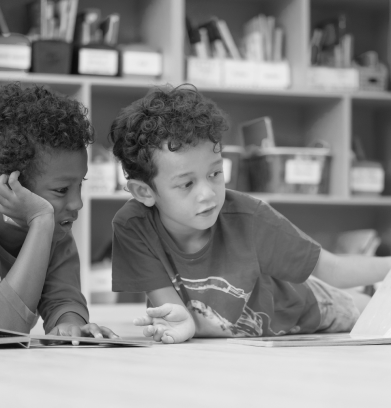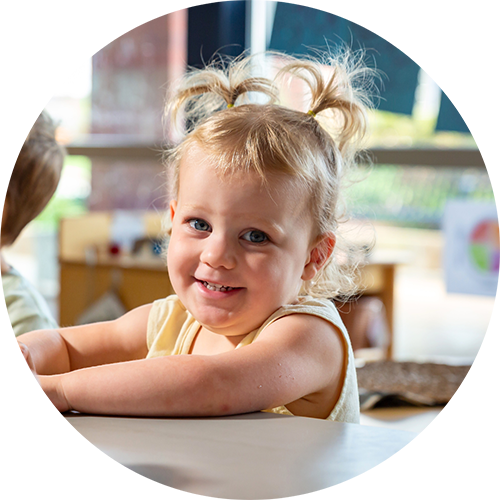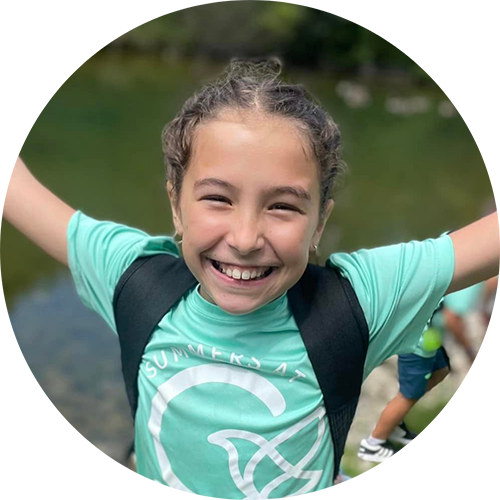Why Celebree School?
FIND A SCHOOLDiscover the Celebree Difference
Your child’s bright future begins here. Our programs are designed to educate the whole child, nurturing their social-emotional and academic growth while building a foundation for lifelong success.
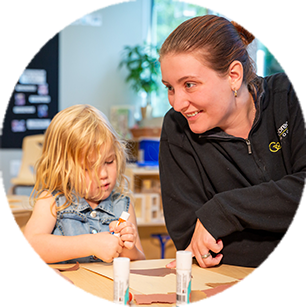
Our Teachers
At Celebree Schools, our team of educators is focused on helping your child develop a strong sense of self and a joy for learning. Each School has a team of educators who are excited to spend the day helping children grow, learn, and develop.

Our Curriculum
Based on the 7 Domains of Learning, we’ve created a curriculum program that is age appropriate and helps your child build a foundation for a lifetime of learning. From personal and social development, through scientific thinking, to the arts, your child will be excited to learn new things each day.
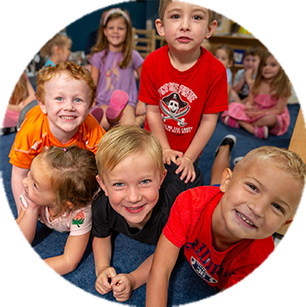
Our School Family
We’ve created a new kind of school family; one where educators, parents, and children unite in support of one another. We are a village – one where we help children find joy, growth, and success every day while giving you as a parent, one less thing to worry about. We’re on your team.
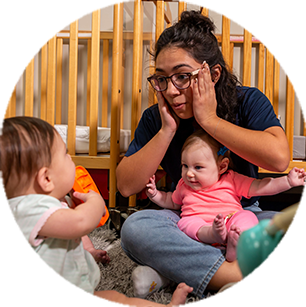
Our Values
We create a feeling of home and supportive community through our core pillars of Protect-Educate-Nurture. Our children are empowered to explore. We provide a safe environment where children feel comfortable to explore, take developmentally appropriate risks, and ultimately thrive.

Protect
We take our responsibility to protect children seriously. We follow all licensing regulations and pursue the highest level of accreditation.

Educate
Process oriented and curriculum based education begins at birth and lays a foundation for lifelong success.

Nurture
We help children develop independence, respect for others, and the confidence they need to thrive.
Mission. Vision. Values.
Celebree School Mission Statement
Our professional and dedicated team nurtures and educates infants, toddlers, preschool, and school-age children in a wide-range of child care programs. Our children develop positive social skills and values and learn about their world through age-appropriate play, projects, and activities. We provide a stable, secure learning environment that fosters a solid foundation for lifelong success.
Celebree School Vision Statement
Our vision is to be the recognized leader in providing the best care for infants, toddlers, preschool, and school age children. Known for our exceptional educational programs, talented teams, and community relationships, we pride ourselves on our unique blend of fun and learning in a safe and nurturing environment.
Take a Virtual Tour through a Celebree School
While each community’s school has a look and feel that is unique to their local area, you can get a feel for what to expect by viewing our virtual tour. Step inside a Celebree School and experience the joy of learning!
Learn More About Our Curriculum
In Our Schools You Can Expect to See
- Focus on cleanliness through routine classroom cleanings, frequent hand washing, continuous trainings to follow CDC and local state regulations
- Limited access entry systems requiring individualized parent identification numbers before admittance
- Closed circuit surveillance systems monitoring all areas throughout the school
- Dependable and practiced emergency and lock-down procedures
- Many schools have classrooms equipped with locking doors and emergency panic buttons to ensure safety
Our Teachers
- Are First Aid/CPR certified, exceeding the Office of Child Care’s requirements
- Are trained in and are qualified to execute all security measures
- Are educated in the milestones and skills children at each age should achieve
- Complete background checks through the state and federal fingerprint process and screening through Child Protective Services upon hiring
These protective measures keep children safe, but enable parents to visit at any time, no appointment necessary.
Find Out More About Celebree
Our History
Ours is a long, proud history that began in 1994 when Richard Huffman opened the first of his childrens learning centers. Today, we are a community of over a thousand educators dedicated to positively impacting the lives of countless children.
Celebree School Historical Timeline
Support Center
Our Support Center assists the school teams in many areas so that our directors and teachers can focus on what’s most important: protecting, educating, and nurturing the children in our care. This umbrella of support allows our leadership and teaching teams to have access to world class training, development, human resources, marketing, operations, and business administration support every day.

Hear From Our Parents
Dependable Child Care You Can Rely On
Celebree School is where learning begins with love. As a trusted day care center built on compassion, connection, and community, we know that finding the right place for your child is one of the most important decisions you’ll make. That’s why our mission is to provide more than just child care—we’re here to be a true partner in your parenting journey.
As fellow parents, we understand the fast-paced, tech-heavy world our children are growing up in. It’s not just about teaching children the alphabet or how to count. It’s about nurturing curiosity, encouraging empathy, and guiding children to become confident, capable individuals. At Celebree School, we’re educators and caregivers with hearts as big as our vision to help every child shine.
Whether you’re looking for full-time preschool or day care support that fits your family’s needs, Celebree School is a safe, joyful space where your child will thrive.
Let’s launch their lifelong love of learning together. Contact us to visit a Celebree School near you!








